THIEL CS 3.7 LOUDSPEAKERS
| THIEL CS 3.7 LOUDSPEAKERS |
| Strutting Its Stuff |
|
|
|
December 2009 |
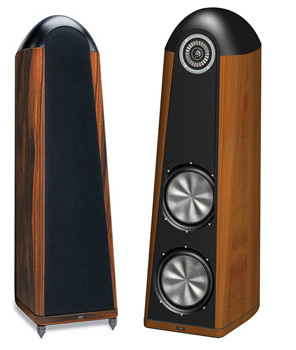
There is a buzz of anticipation as pianist extraordinaire Ahmad Jamal makes his way to the small stage at the Regattabar here in Cambridge, MA., dressed impeccably in a pristine white high-collar suit. As Jamal places his small, slender hands on the piano’s keys, one wonders what tricks might be up his bellowing white sleeves tonight. What emerges first is a soft, probing solo introduction, all filigree and delicate notes hinting at the hushed colors and fall of leaves in this Autumnal Season. From deep in the recesses of this quiet introduction emerges the outlines of a beautiful Middle Eastern melody, given wings by Kenny Washington’s brushes on his snare and Manolo Badrena’s taps on timbales and wind chimes. “Somewhere Along the Nile,” (an early Jamal composition) comes into view and we are swept away on a wave of Bebop, Blues and Jelly Roll, all under a Middle Eastern melodic sky. At one point, Jamal takes two fingers and hits individual keys on his piano with such force and rapid succession that he creates a huge maelstrom of swirling colors and sounds. 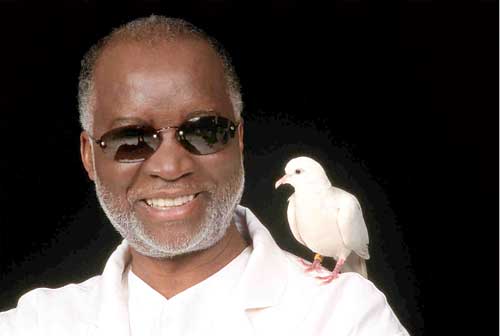 This wall of sound grows into a massive crescendo, shocking in its volume contrast (to what had come before) and huge in its projection into the room. At this point, Jamal stands up from his seat and continues this roll of thunder with the full force of his slender build bent upon these isolated keys. Just as suddenly, however, Jamal raises his finger in the air to signal a sea change. In the flash of a millisecond, all is quiet and absolutely silent, as Washington grabs his cymbal to stop its huge, shimmering decay in its tracks. In total silence, Jamal sits back down at the piano and, (after a long pause), coaxes back the gentle Moroccan tinged melody, all soft and quiet as a coddling coda. We are left to catch our breath, held mesmerized by Jamal’s brilliant use of dynamic shading; going from ballistic thunder to a soft whisper in an instant and weaving each dynamic change coherently into the larger fabric of his inspired compositions.
This wall of sound grows into a massive crescendo, shocking in its volume contrast (to what had come before) and huge in its projection into the room. At this point, Jamal stands up from his seat and continues this roll of thunder with the full force of his slender build bent upon these isolated keys. Just as suddenly, however, Jamal raises his finger in the air to signal a sea change. In the flash of a millisecond, all is quiet and absolutely silent, as Washington grabs his cymbal to stop its huge, shimmering decay in its tracks. In total silence, Jamal sits back down at the piano and, (after a long pause), coaxes back the gentle Moroccan tinged melody, all soft and quiet as a coddling coda. We are left to catch our breath, held mesmerized by Jamal’s brilliant use of dynamic shading; going from ballistic thunder to a soft whisper in an instant and weaving each dynamic change coherently into the larger fabric of his inspired compositions.
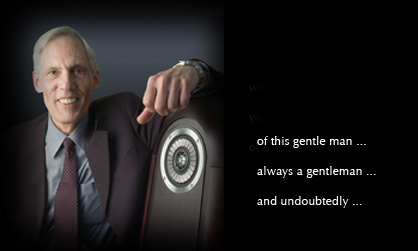
I hope that during his lifetime, Jim Thiel (1947-2009) also had the good fortune to hear Ahmad Jamal perform, because I believe Thiel would have found great joy in the sonic connections between Jamal’s artistry in concert and the particular sonic values that are embodied so brilliantly in Thiel’s CS 3.7 loudspeaker, the pinnacle of Jim Thiel’s more than thirty years of designing loudspeakers for his company, Thiel Audio.
Countdown
Jim Thiel explains in the literature accompanying the CS 3.7 that his goal was to design a loudspeaker from the ground up, in order to achieve a new level of signal coherency and reduction in distortion. To accomplish these goals, numerous design and material innovations were incorporated into the CS 3.7 and I refer readers to Thiel Audio’s excellent website [www.thielaudio.com], for complete technical coverage. 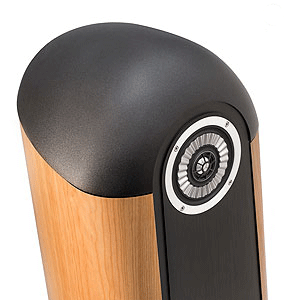 In brief summary, the CS 3.7’s most salient feature is its “coincident” design that mounts its tweeter unit coaxially and “coplanarly” in a new midrange driver. The goal, theoretically, is perfect time coherence with signals from both drivers arriving at the same time at any listening position. However, as with all coincident speaker designs, the issue is how to make sure that the tweeter’s output is not altered due to reflections from the midrange diaphragm located in the same area. Jim Thiel grappled with this issue in his design of the CS 3.7 and came up with a novel geometric solution. The new midrange driver of the CS 3.7 is basically flat, not cone shaped, and composed of aluminum with numerous radiating “corrugations” (like spokes on a wheel), that act to give it ten times the stiffness of composite diaphragms while retaining extreme lightness. The tweeter unit is mounted within this new midrange driver by a long gap motor system that uses a set of four radial and one axial neodymium magnets, weighing six times that of a typical neodymium powered tweeter. Journeying further down, the CS 3.7’s woofer also utilizes this flat, corrugated technology, augmented by a passive, enclosed bass radiator diaphragm that handles the CS 3.7’s lowest frequencies. The crossover of the CS 3.7 is equally re-designed, employing a true first order acoustic type combining copper stabilized, short-coil motor systems with custom polystyrene capacitors.
In brief summary, the CS 3.7’s most salient feature is its “coincident” design that mounts its tweeter unit coaxially and “coplanarly” in a new midrange driver. The goal, theoretically, is perfect time coherence with signals from both drivers arriving at the same time at any listening position. However, as with all coincident speaker designs, the issue is how to make sure that the tweeter’s output is not altered due to reflections from the midrange diaphragm located in the same area. Jim Thiel grappled with this issue in his design of the CS 3.7 and came up with a novel geometric solution. The new midrange driver of the CS 3.7 is basically flat, not cone shaped, and composed of aluminum with numerous radiating “corrugations” (like spokes on a wheel), that act to give it ten times the stiffness of composite diaphragms while retaining extreme lightness. The tweeter unit is mounted within this new midrange driver by a long gap motor system that uses a set of four radial and one axial neodymium magnets, weighing six times that of a typical neodymium powered tweeter. Journeying further down, the CS 3.7’s woofer also utilizes this flat, corrugated technology, augmented by a passive, enclosed bass radiator diaphragm that handles the CS 3.7’s lowest frequencies. The crossover of the CS 3.7 is equally re-designed, employing a true first order acoustic type combining copper stabilized, short-coil motor systems with custom polystyrene capacitors.
As for its fully sealed enclosure, Thiel developed a wealth of innovations to target vibration reduction, elimination of diffracted driver energy and internal standing waves. The SC 3.7’s fit and finish is superb. Its rounded compact cabinet employs fifteen layers of hardwood and is capped by a heavy aluminum top to further eliminate vibrations. The speaker’s sloping front baffle is machined from aluminum to insure the stability of the drivers and their lack of movement when recoiling from forces to accelerate their diaphragms. The CS 3.7’s curvaceous cabinet (designed to present no parallel walls for internal resonances or standing waves) does not visually dominate a room like other large loudspeakers. I found its grills nicely designed (with a magnetic touch), but they were best left off during playback, as they did veil the sound ever so slightly. Finally, Thiel also designs a low profile outrigger system that easily attaches to the base of the CS 3.7 to provide excellent stability to its slender footprint.
Lift Off
The CS 3.7’s flat driver surfaces resemble ideal launching pads for the projection of great midrange and treble energy into a given listening room, mirroring that aliveness and dynamic impact as experienced in concert with Ahmad Jamal and his trio. Just like Ahmad Jamal’s ability to go from a whisper to a maelstrom on his piano, so too the CS 3.7 is capable, at its very best, of such brilliant dynamic projection and realism. However, to get the CS 3.7 to really take off, it required careful attention to set up and system details. First, AC supply and mains improvements were critical. This meant simple and cost effective upgrades such as separate AC power to the system; attention to upgrading power sockets and making sure power cords were ideally from the same company, identical in their same materials and technology. Joe Reynolds and Roy Gregory of Nordost brought over their latest cost effective “Quantum Resonant Technology” products ( www.quantumqrt.com) that provided for easy earth grounding for my system as well as a mains improvement system that was startling in its improvements to my system (as I hope to report on in the future). As for set up, the CS 3.7 performed best in a large space, where close attention is paid to treatment of all reflective surfaces. I found that with its wide dispersion of midrange to treble energy, the CS 3.7 required placement as far from side and rear walls as possible; with eight feet or more between them (for best soundstage width) and a listening position at the base of a triangle at least ten feet away. The CS 3.7 is not a romantic or a forgiving transducer. Careful attention needs to be paid to accompanying electronics. It absolutely required solid state amplification, with good dampening and large power sources to drive it to its potential.
Set up properly, the CS 3.7’s best quality was its sheer aliveness, dynamic prowess and projected vibrancy in all bandwidths. 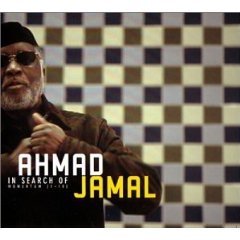 Taking a cue again from Ahmad Jamal, (listening to his “Island Fever” from In Search of Momentum [Birdology Records]), found the CS 3.7 brilliantly conveying all of Jamal’s mastery with soft piano touches nestled next to his patented huge dynamic crescendos. The accuracy of the CS 3.7 in its lower to upper midrange was shockingly good; each dynamic shading articulate, detailed and so real that you almost fall out of your listening chair at the power and drama of it all. Jamal’s piano had great midrange and treble clarity, pinpointed and highly precise, without excess edge and with just the right amount of decay after each note. The CS 3.7’s gift with conveying the natural timing and minute gradations of Jamal’s dynamic shadings was special indeed.
Taking a cue again from Ahmad Jamal, (listening to his “Island Fever” from In Search of Momentum [Birdology Records]), found the CS 3.7 brilliantly conveying all of Jamal’s mastery with soft piano touches nestled next to his patented huge dynamic crescendos. The accuracy of the CS 3.7 in its lower to upper midrange was shockingly good; each dynamic shading articulate, detailed and so real that you almost fall out of your listening chair at the power and drama of it all. Jamal’s piano had great midrange and treble clarity, pinpointed and highly precise, without excess edge and with just the right amount of decay after each note. The CS 3.7’s gift with conveying the natural timing and minute gradations of Jamal’s dynamic shadings was special indeed. 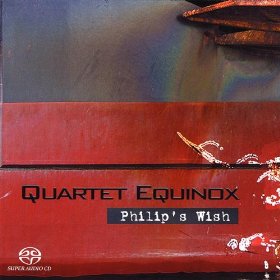 Another example of this was the Flamenco-tinged heat of the Quartet Equinox, on their superbly recorded hybrid SACD, Philip’s Wish[DIP Records]. On “Rapid Waters,” flute and acoustic guitar intertwine in sinuous motion, leaving upright bass, wood block and drums to flesh out the interstitial spaces between. The CS 3.7 provided all of the midrange tactile impact of nylon guitar strings being struck and decaying naturally in real space and time. It also projected the backbone of energy, pacing and rhythmic impact that makes Quartet Equinox’s creative stew of Flamenco influences in the Jazz context so inviting.
Another example of this was the Flamenco-tinged heat of the Quartet Equinox, on their superbly recorded hybrid SACD, Philip’s Wish[DIP Records]. On “Rapid Waters,” flute and acoustic guitar intertwine in sinuous motion, leaving upright bass, wood block and drums to flesh out the interstitial spaces between. The CS 3.7 provided all of the midrange tactile impact of nylon guitar strings being struck and decaying naturally in real space and time. It also projected the backbone of energy, pacing and rhythmic impact that makes Quartet Equinox’s creative stew of Flamenco influences in the Jazz context so inviting.
The CS 3.7 also had a special affinity with rock ‘n’ roll. The CS 3.7’s combination of midrange accuracy with great clarity and transparency in all bandwidths delivered the gorgeous filigree of Jerry Garcia’s solo on “Midnight Moonlight” (from After Midnight, Kean College 2/28/80 [Rhino]) with a power and realism that was stunning. Waves of energy pressurized my room, with lead guitar and underlying bass beautifully interwoven with a clear exposition of natural space and timing between them. 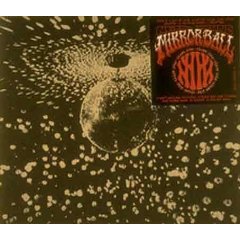 On Neil Young’s “Downtown,” from Mirrorball [Reprise 459342], the CS 3.7 had me holding on to my hat as Young and members of Pearl Jam traded huge licks back and forth, replete with lightning quick transcients and palpable heat from pick-ups. Other examples were the frolicking Keith Richards on “Eileen” from his great Main Offender [Virgin 86499], riding alongside Steve Jordan’s perfectly timed, concise and huge percussive energy. The CS 3.7 conveyed that special timing again, where I could hear the stop and start of Jordan’s drums and the right amount of decay in the low and mid bass. On the wallop of Ozomati’s percussive attack in their opening number, “Dos Cosas Ciertas”, (from their fiery recording, “Live At The Fillmore [Concord Records]), the CS 3.7 effortlessly unbraided the dense congestion of all of the sounds and colors of Ozomati’s huge presentation on a spacious stage.
On Neil Young’s “Downtown,” from Mirrorball [Reprise 459342], the CS 3.7 had me holding on to my hat as Young and members of Pearl Jam traded huge licks back and forth, replete with lightning quick transcients and palpable heat from pick-ups. Other examples were the frolicking Keith Richards on “Eileen” from his great Main Offender [Virgin 86499], riding alongside Steve Jordan’s perfectly timed, concise and huge percussive energy. The CS 3.7 conveyed that special timing again, where I could hear the stop and start of Jordan’s drums and the right amount of decay in the low and mid bass. On the wallop of Ozomati’s percussive attack in their opening number, “Dos Cosas Ciertas”, (from their fiery recording, “Live At The Fillmore [Concord Records]), the CS 3.7 effortlessly unbraided the dense congestion of all of the sounds and colors of Ozomati’s huge presentation on a spacious stage.
The CS 3.7’s bass regions proved to be pungent and speedy on all of these Rock, Latin and Kick Out Selections. There was nothing sweeter than listening to Victor Wooten solo on electric bass on his version of “Amazing Grace” from Bela Fleck and Flecktones’ Live At The Quick [Columbia], with the CS 3.7 in control. 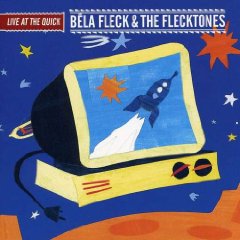 The CS 3.7 projected Wooten’s mastery right into my lap, shockingly realistic in all of his fascinating plucks, harmonic twists and long chord holds down low. The CS 3.7 might not plumb down as far as others in its price range, but it provided very coherent and dynamic bass, with lots of speed, slam and articulation (best with high powered solid state amplification and AC mains improvements in place!). Its mid to low bass provided that same gift with dynamic shadings, conveying minute gradations in bass volume and articulation; for instance, when Wooten lets his lowest plunges decay from their initial huge attack to a soft lingering whisper into the soundstage.
The CS 3.7 projected Wooten’s mastery right into my lap, shockingly realistic in all of his fascinating plucks, harmonic twists and long chord holds down low. The CS 3.7 might not plumb down as far as others in its price range, but it provided very coherent and dynamic bass, with lots of speed, slam and articulation (best with high powered solid state amplification and AC mains improvements in place!). Its mid to low bass provided that same gift with dynamic shadings, conveying minute gradations in bass volume and articulation; for instance, when Wooten lets his lowest plunges decay from their initial huge attack to a soft lingering whisper into the soundstage.
Finally, vocals were also well served by the CS 3.7’s accuracy and intense realism in its midrange. On his live version of “In My Secret Life,” from Live In London [Sony], Leonard Cohen’s deep and dark baritone was served up and projected into my room with tremendous presence, warmth and depth. 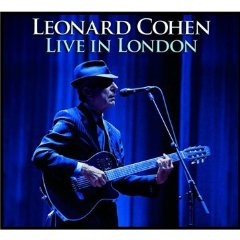 This cut also highlighted another of the CS 3.7’s best qualities: its ability to disappear as a sound source and its fantastic stereo imaging. Cohen was perfectly placed as a central image between the speakers and both he and his female vocal accompanists were naturally drawn in size and position on the stage. On Blue Coast Record’s first hybrid SACD collection, (www.bluecoastrecords.com) the CS 3.7 rendered the wispy vocals of Jane Selkye on her track, “Slow Day” beautifully. Selkye’s voice was rendered light, airy and with full treble extension. The CS 3.7’s special way with dynamic shadings and clear exposition of timing revealed each of Selkye’s vocal steps up and down her register, as well as her creative use of quiet pauses and slower tempos. Listening to a cappella recordings, such as the infectious Persuasions, on their brilliant disc, Persuasions Sing The Beatles[Chesky]), the CS 3.7 brought rollicking joy to these vocal proceedings. It provided a beautiful semi-circle of performers on a layered stage, each singer articulate and full bodied. It also provided crackling energy to each singer’s delivery and great dynamic exposition of every vocal nuance.
This cut also highlighted another of the CS 3.7’s best qualities: its ability to disappear as a sound source and its fantastic stereo imaging. Cohen was perfectly placed as a central image between the speakers and both he and his female vocal accompanists were naturally drawn in size and position on the stage. On Blue Coast Record’s first hybrid SACD collection, (www.bluecoastrecords.com) the CS 3.7 rendered the wispy vocals of Jane Selkye on her track, “Slow Day” beautifully. Selkye’s voice was rendered light, airy and with full treble extension. The CS 3.7’s special way with dynamic shadings and clear exposition of timing revealed each of Selkye’s vocal steps up and down her register, as well as her creative use of quiet pauses and slower tempos. Listening to a cappella recordings, such as the infectious Persuasions, on their brilliant disc, Persuasions Sing The Beatles[Chesky]), the CS 3.7 brought rollicking joy to these vocal proceedings. It provided a beautiful semi-circle of performers on a layered stage, each singer articulate and full bodied. It also provided crackling energy to each singer’s delivery and great dynamic exposition of every vocal nuance.
For all of its great sonic qualities, including superb dynamic articulation and great powers of projection and coherency in all of its bandwidths, the CS 3.7 did have its weakness, as every loudspeaker does. I found the CS 3.7’s string tone to be somewhat analytic and lacking in natural full body and proper timbre. For example, with a beautiful recording of a chamber orchestra, such asThe Moscow Soloists recording of Edvard Grieg’s “From Holberg’s Time” [Onyx] one should be drawn into the wonderful combination of flamboyance, playfulness and subtlety in this recording. Listening to it through my Reference 3A Grand Veena loudspeakers, high string timbres were full and natural, with the right combination of sweetness and bite. In contrast, the CS 3.7 string tone was more analytic (even though it possessed very good top end extension). It was as if its tweeter was resolving only the surface of high string tone (like skating on ice), as opposed to being able to convey the bodily substance of wood, glue and strings (and all their natural resonant qualities) when bowed. Leaning towards the analytic in string tone and timbre made it more difficult for me not to focus on the loudspeaker itself, as opposed to the music flowing forth.
Landing
The CS 3.7 is definitely one of the most coherent and propulsive transducers I have auditioned to date, in any price range. It shares a special affinity for rambunctious rock ‘n’ roll, small and large scale Jazz, Blues and recordings of live performances in these genres. Its frequency extension and dynamic articulation in all bandwidths are superb, as is its stereo imaging. With careful set up and high power amplification, the CS 3.7 is a speaker that announces its arrival and proceeds to project its dynamic and visceral music making with all the verve and gumption of a confident guest of honor. It does so even at low volume, which is truly remarkable. We all listen for different things in loudspeakers and there is no one loudspeaker for everyone. I thought the CS 3.7’s main weakness was a tweeter that tended to the analytic side, especially on high string tone. This weakness noted, the CS 3.7 competes well beyond its price point in so many areas that it should rightly be considered a top performer, especially for those who relish a vivacious projection of sound from a point source loudspeaker. Like listening to the great Ahmad Jamal in concert, the CS 3.7 grabs one by the collar and mesmerizes with its vivid energy, coherent projection of sound and special way with music’s dynamic shadings. As a final note, I am happy to report that Thiel Audio is alive and well after Jim Thiel’s recent passing and will continue to thrive into the future. It certainly bodes well for Thiel Audio that it has Jim Thiel’s legacy and his CS 3.7 strutting its stuff in the forefront of today’s coincident loudspeaker designs.

![]()
CS 3.7 Specifications
Bandwidth: (-3dB) 32 Hz-35KHz
Amplitude Response: 33 Hz-22kHz +/-2dB
Sensitivity: 90 db at 2.8V-1m
Impedance: 4 ohms
Size: 12.5” (w) x 21” (d) x 45”(h)
Weight: 91 lbs.
Price: $12,900.00- standard finishes; ebony finish: $13,400.00; outrigger stands $500
Company Information
Thiel Audio
1026 Nandino Boulevard
Lexington, Kentucky 40511-1207
Tel: 859-254-9427
Website: www.thielaudio.com
![]()
Don’t forget to bookmark us! (CTRL-SHFT-D)
Stereo Times Masthead
Publisher/Founder
Clement Perry
Editor
Dave Thomas
Senior Editors
Frank Alles, Mike Girardi, Key Kim, Russell Lichter, Terry London, Moreno Mitchell, Paul Szabady, Bill Wells, Mike Wright, Stephen Yan, and Rob Dockery
Current Contributors
David Abramson, Tim Barrall, Dave Allison, Ron Cook, Lewis Dardick, Dan Secula, Don Shaulis, Greg Simmons, Eric Teh, Greg Voth, Richard Willie, Ed Van Winkle, and Rob Dockery
Music Reviewers:
Carlos Sanchez, John Jonczyk, John Sprung and Russell Lichter
Site Management Clement Perry
Ad Designer: Martin Perry





Be the first to comment on: THIEL CS 3.7 LOUDSPEAKERS